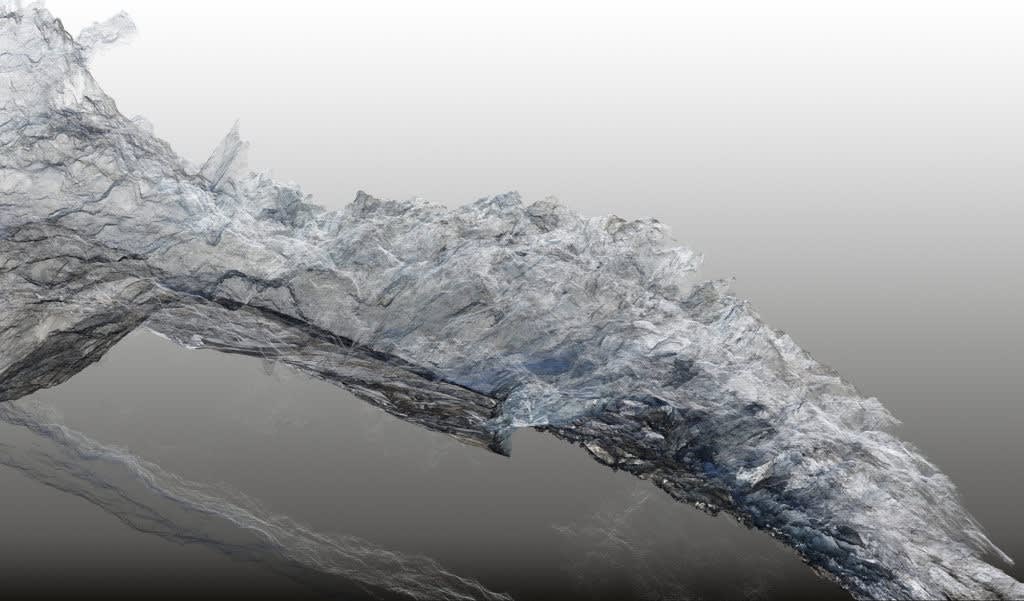
Paris Photo 2016, held in the Grand Palais, had more than 150 galleries (1) representing approximately 3,300 photographers from around the world. The photography displayed included a mix of both vintage and contemporary works. Twenty-nine publishers/book dealers on photography were also on exhibit at Paris Photo. The vast majority of the dealers were from outside of the United States. This does not include all the satellite exhibitions at museums and other Paris based galleries presenting photographic work. Clearly, much to absorb. The exhibitions included several photographers using photography as a platform for different styles of artistic expression. Out of all this work, this Commentary is about five photographer/artists: Dan Holdsworth, Iris Hutegger, Elene Usdin, Letha Wilson and Kate Steciw.
The challenge from these selected artists is intellectual and visual with the creation of photography-based works that should be closely examined. The tools of photography in the past were geared toward a faithful reproduction of what nature created. At first, the camera obscura was invented to enable reproduction by drawing, Then, as cameras developed, images were recorded on metal, glass or paper. Then lenses were refined and improved to better capture reality within the camera under various light conditions. Photographers sought out the best time of day to capture the best light for fine visual pleasure. Pictorialists stepped in to challenge photography’s position as an art form and visual interpretation of a moment. Realism and documentary photography took over to record moments in a variety of ways, but usually with a lens, film and camera with a faithful reproduction on paper of a two dimensional image. At Paris Photo the entire breadth and depth of photographic history could be found. But, also found at Paris Photo are photographers that are stretching out the boundaries of what is considered photography or “photography-based” work. These artists are using new visual technologies and related tools to abstract reality, but yet, in a sense, remain faithful to it.
Dan Holdsworth (2), a British photographer, has redefined landscape photography. His work combines photography with the study of geology and leverages GPS technology to create an entirely new form of image. On the Scheublein & Bak Gallery (3) website, it states that “Continuous Topography is the visual representation of what Dan Holdsworth calls “a future archaeology””. This series is a continuation of his other photography-based studies of landscape and geology. On Holdsworth’s own site, he posted a commentary on “Continuous Topography “ by Alistair Robinson: “ The extraordinary three-dimensional models we encounter are photographic in origin… Each image is created through a lengthy process of correlating several hundred photographs of a landscape with GPS recordings to begin to build an intensely detailed virtual model of its morphology (4).” Holdsworth’s integration of technology with photography and image capture is expanding the horizon of photography beyond the literal capture of nature on film and paper. In the following discussion, Iris Hutegger and Letha Wilson will deal with landscapes very differently.
 © Dan Holdsworth, Continuous Topography, Argentiere Glacier no. 07, 2016, C-type print, aluminium frame, UV Perspex, Copyright: the artist / Courtesy: SCHEUBLEIN + BAK, Zürich
© Dan Holdsworth, Continuous Topography, Argentiere Glacier no. 07, 2016, C-type print, aluminium frame, UV Perspex, Copyright: the artist / Courtesy: SCHEUBLEIN + BAK, Zürich
At another gallery within the Grand Palais at Paris Photo was the Esther Woerdehoff Gallery (5), also based in Paris. The gallery featured two artists whose works I found intriguing: Iris Hutegger (6) and Elene Usdin (7). Both of these artists incorporate other materials and media into their photography-based work. Hutegger, an Austrian-born photographer, now living in Switzerland, uses a sewing machine to stitch, in different densities, different colored threads into the landscape, not to cover or obliterate it, but to create color with a differing texture as she recalled the image she originally saw. Usdin, a French photographer, paints onto the photo image surface. She chooses some other well known artists and mimics their style in her own way, using greenery and characters that match the apparent mood of the subjects.
Photographers have often used other media and art practices with photography (8). The work of Iris Hutegger combines a fine embroidery on her silver gelatin prints to make each object a unique piece. Each piece shows carefully selected colors of thread sewn onto the image with a sewing machine from her memory of the scene. While there are similar efforts by other contemporary artists today, the fine detail, subtle and very complimentary color palate added to the image does not obscure or give the image a different meaning other than as a landscape. (See the extracted detail of the thread and sewing in the additional image included.) Hutegger’s delicate sewing into the image is not a violation or destruction of the image, but instead enhances the landscape to present the viewer a special added texture beyond a traditional photograph.
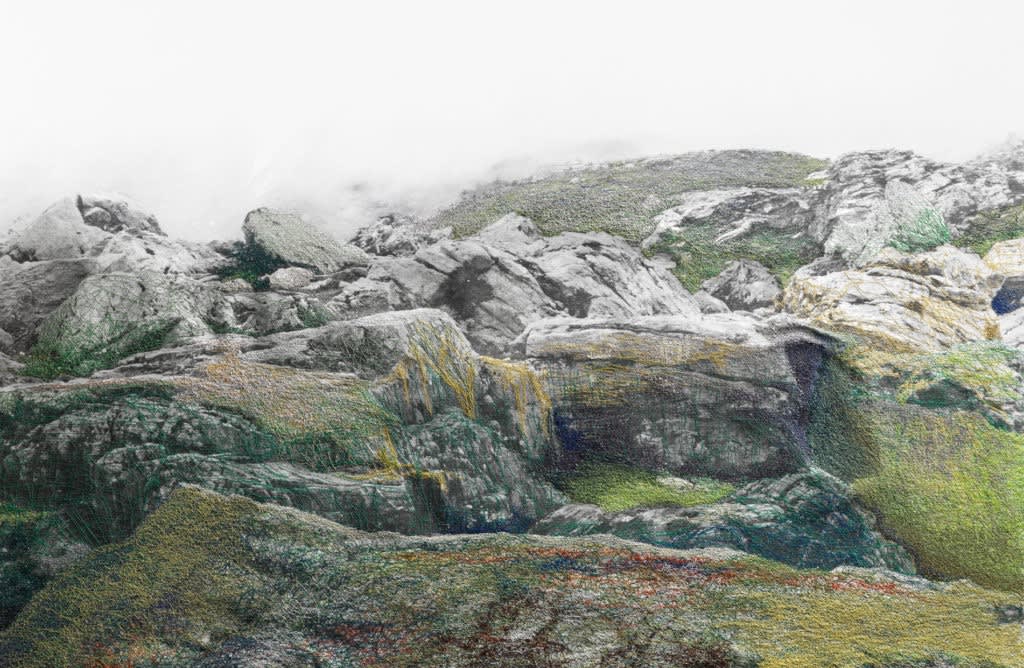
Many photographers were, or are still, artists that work(ed) in a medium other than photography (9). In an interview with Giovanno Battista Martini, Iris Huttegger shared that she started off painting, and then experimented with sculpture using clay, stone wood and bronze before she turned to photography. Her use of sewing with photography was a fortunate accident. In this interview she shared, “One day I printed a series of photographs I was really dissatisfied with, and as a way of taking out my anger on these pictures I started to put them through the sewing machine to destroy them…I didn’t throw these pictures away immediately, but only after a few weeks, and during that time I began to reflect on the relationship between material – the thread and the color of the thread – and the photographic image in black & white. … So I went through various attempts until I found the procedure I was looking for.”
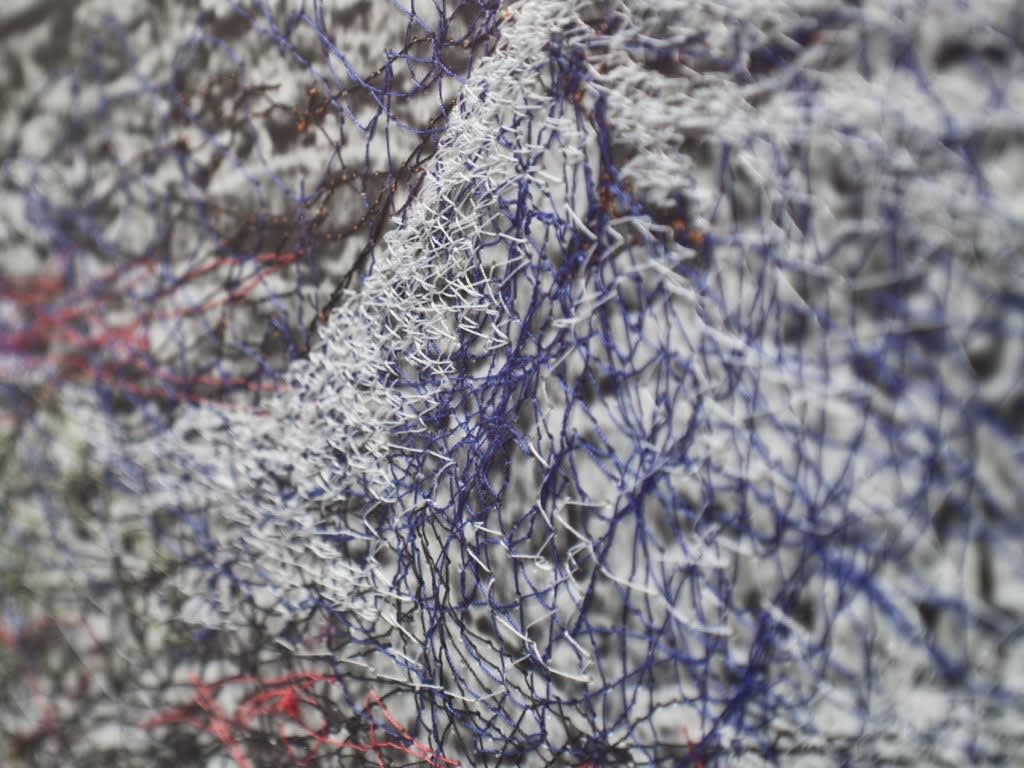
Elene Usdin, a photographer, illustrator and multimedia artist, was also exhibited at Galerie Esther Woerdehoff. As with the other images discussed in this commentary, the artist has used photography, but stretched its traditional use and presentation to create work that moves into new territory. Usdin manipulates images by painting on to the image’s surface. She has many other bodies of work and often includes herself as the subject of her images. This series is very different from her other works in that she has chosen someone else, other than her self, to be posed as the subject of the image. She then chooses the work of another artist or painter to mimic their technique, painting on the image in their style and/or using creatures that this other artist might have used. One gets the impression that she matches the posed subject’s captured mood with the type of creatures associated with the other artists she mimics. It’s an interesting extension of expression from a documentary portraiture style of photography into something else. We see enough of the seated person in the image to sense who they are and how they are feeling at that moment. In the image “Adèle d’après le Douanier Rousseau” the mimicked artist is Henri Rousseau. In some cases, she creates a border around the image, entirely or in part. The painting of floral, fauna and fanciful creatures complement and expand on expression of the subject in the image.
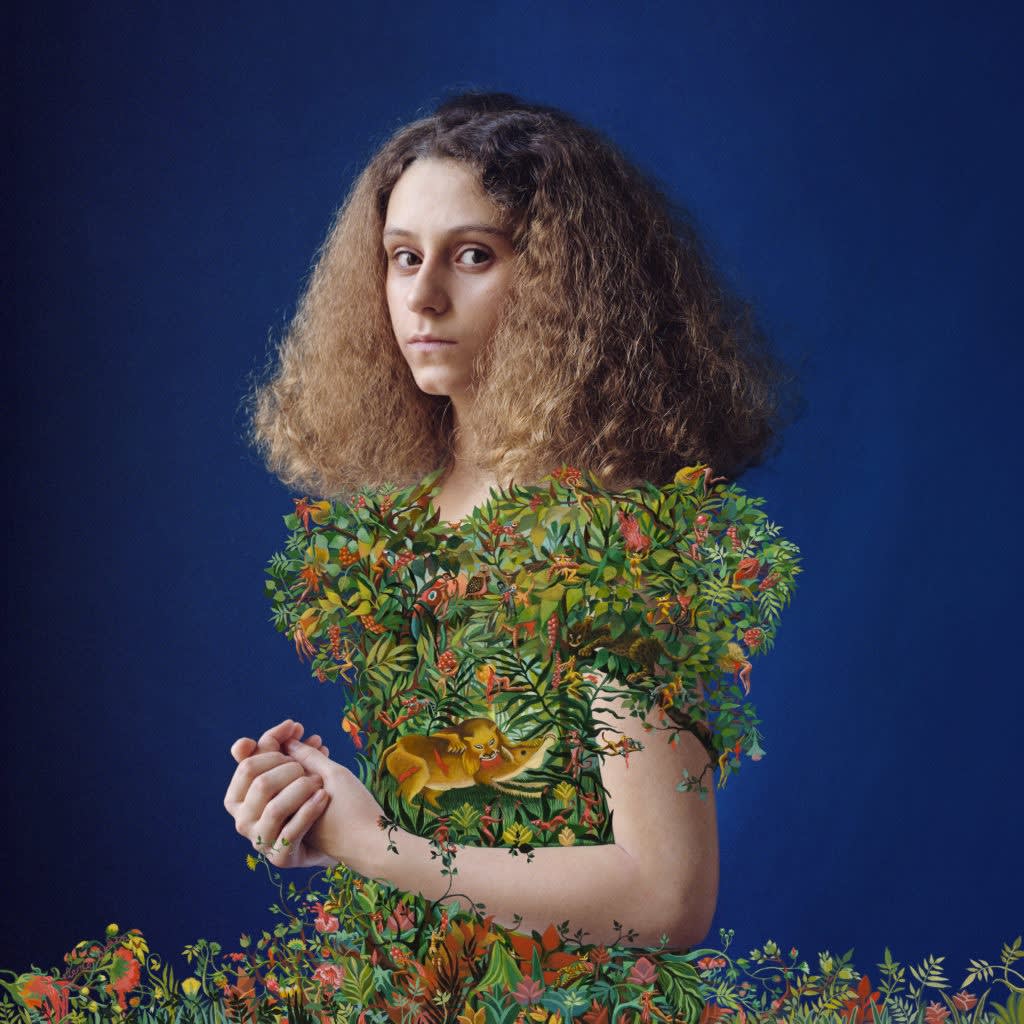
Not all the work exhibited was at the Grand Palais. At the Parisian Galerie Christophe Gaillard, I saw the works of Letha Wilson and Kate Steciw, two artists I have read about and admired (10). Both artists combine photography and sculpture into their art. Certain of Letha’s works are landscape related, but with a radically different presentation. Her art is a combination of photographs embedded into a concrete structure and then hung on the wall. The process is visually challenging and physically imposing. Two of the images displayed at Galerie Christophe Gaillard that most caught my attention were “Dijon Kauai Concrete Bend, 2016”, and “Goblin Valley Glacier Concrete Bend, 2016”.
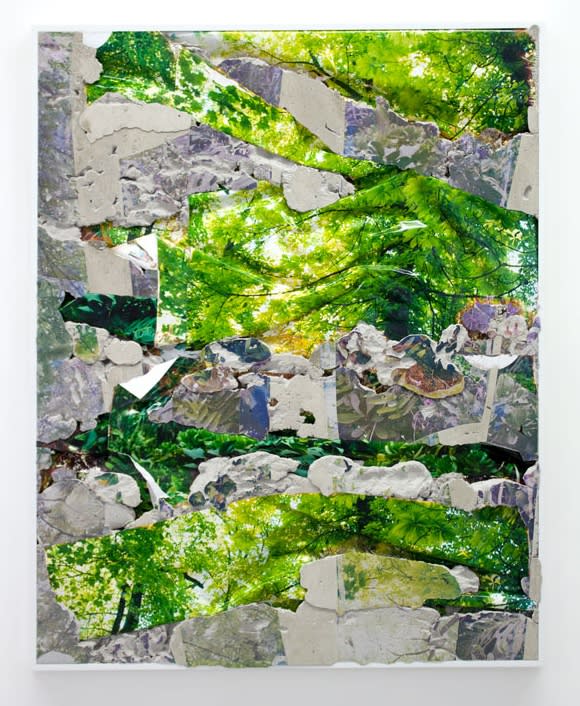
Steciw’s work was intriguing for the abstract nature of the photography images she selected, and for the different physical presentations on various surfaces such as metal with sections layered or removed from the panel, or hung from the ceiling as a 3D object of art you can engage with by walking around it. Two works of Steciw’s that drew my attention were “Construction 511, 2016” and the “Construction 434, 2016”. Seeing any of these images in print is insufficient compared to experiencing them in person. These are works that need to be seen in person to be fully appreciated.
Letha Wilson’s (11) work mimics geological forms by her use of concrete to hold photography-based images. Wilson was trained as a painter; she also took photography courses. It seems she did not start with a set of rules that hold a photograph as a “precious” object that has to be preserved and protected as the object itself. Therefore, she could break away from the way a traditional photograph was viewed and can fold, bend, or destroy the paper-emulsion connection. In fact, in “Dijon Kauai Concrete Bend” the photo emulsion of the chosen photographs has been removed from the paper backing through the addition of concrete that became bound with the emulsion and fused with the concrete surface. In other cases, the paper image itself has fully, but not smoothly nor evenly, been bound with the concrete. The surfaces of the images are not smooth, but rough and craggy. In the images, the three dimensional weight of the image is felt. Some spaces have no image, only bare concrete, yet the negative space only increases the architectural or sculptural feel of the image. The viewer is given a sense of being present in an outside environment in the woods or enmeshed in the leaves that have been photographed and incorporated into the piece. The color tones used also attract the viewer. In some base visual manner, the colors of the objects against the neutral grey of the concrete all meld together comfortably.
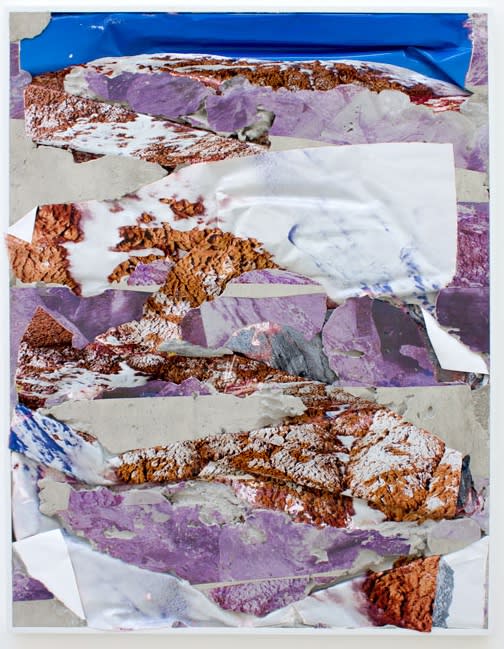
In speaking about her work in a YouTube video (12), Wilson says she gravitated to landscapes because she respects how a viewer will naturally engage and bring their own association or perspective into a landscape. There is an appreciation for how the artist takes a visual selection out of nature and gives us a sense of being part of it and blends ourselves into the image. Her technique, however, challenges the “visual literacy of a viewer” as Charlotte Cotton has said, and forces the viewer to slow down and take a longer period of time to look at the art object. “It’s a commentary about mankind’s encroachment on the natural environment” (13). Her pieces, as the others in this Commentary, can not be viewed quickly and dispensed with. The viewer realizes that what they see is not what they initially might have thought; time has to be taken to reconcile expectations with what is seen. Wilson’s works extend, in a very different way, the tradition of the American landscape that is in many instances a horizontal panoramic majestic view or staid images of trees, plants and rocks.

Another artist , Kate Steciw (14), incorporates photography into 2D images that lie flat on a wall or as a 3-dimensional sculptural works. She studied photography and has worked as a fashion and portrait retoucher on other people’s images. She would say her efforts were driven by a frustration of using the traditional techniques of photography to create images that equaled the image quality of the master photographers. Instead, she was driven to create her own style and practice of work. Steciw’s work was also driven by a desire to slow down the viewer or the “pace of (visual) consumption”. Her work forces a viewer to pause, ask a “visual question”, and take time to reconcile in their mind what they are seeing compared to what their initial expectations might have been. In the piece “Construction 434, 2016”, Steciw has placed photographic images onto metal cut into a variety of shapes. Some of the images are connected and hung from a chain. The viewer can walk around the image and is engaged in examining the hint of what each image could have been and how the group of images might fit together. In the piece “Construction 434” there are a variety of objects incorporated that look like water droplets, fur (or hair) and eggs. Its unclear how these all fit together, but that may be part of what keeps a viewer interested in the sculpture. In “Construction 511”, there seems to be a segment of a scythe, an agricultural hand tool against the side of a wood wall. Beneath the scythe image are water droplets on a metallic reflective surface showing shades of red and green. One can only ponder the connection. For both, the segments of incompletely viewable photographic images are applied to aluminum shapes by a “thermal sublimation” process. “Kate Steciw no longer owns a decent camera… but she takes pictures daily..[m]ixing her old pictures, recent pictures, somebody’s else’s pictures she glues the cut pieces and strings them together … creating whimsical collages” (15). The viewer brings their own association to each of these stock photography images or other acquired images used that has to be reconciled by the viewer in relation to the other images. That association may be very different from what the artist was thinking, but that is unimportant. There is not, it seems, one right message in the work that a viewer must find, discover or accept. The collages may be a combination mounted on a single surface or that take the form of a mobil like arrangement, as with “Construction 434”. A current trend in art photography is the use of found images or, with Steciw, stock photography taken off the internet (16). Vernacular images that were never intended as art, but only for personal use are repurposed. These appropriated images from someone else’ past have been copied, cut, marked on, painted, dissected, paired with other images in a collage and any number of other changes. This is not new. What is new with Steciw’s work are the photographs are no longer just visual images made into art in and of themselves. Her pieces integrate appropriated as well as her own images into a sculptural piece of art.
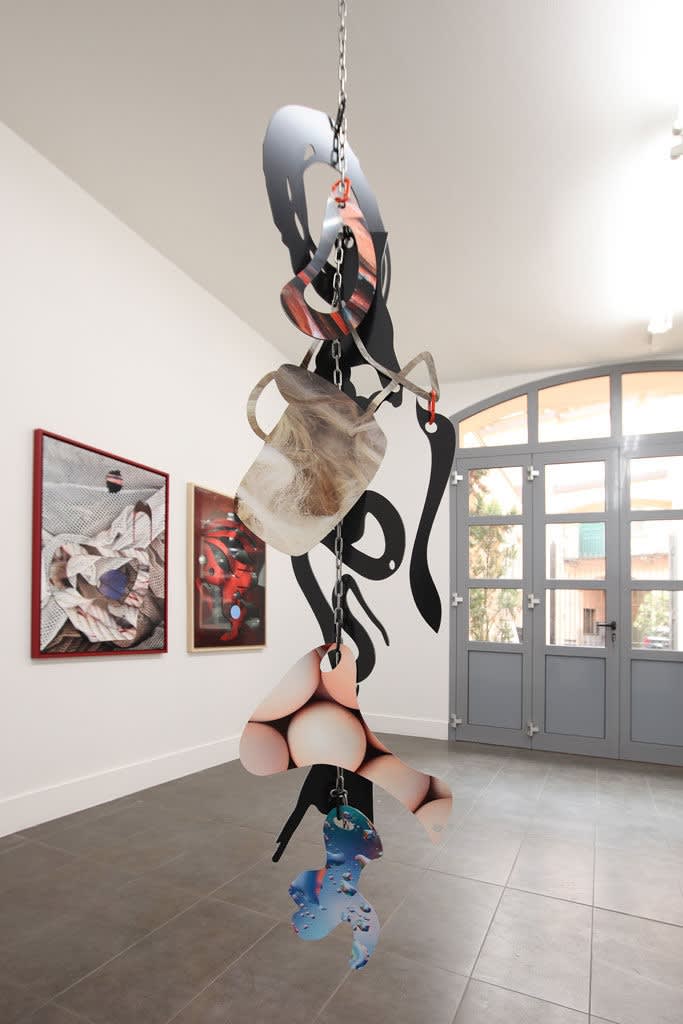
There are several other contemporary (and older vintage) photographers, for the most part non-US, whose work I saw and appreciated. Some the other contemporary works were done by: Veronique Ellena (French), Cannon Bernaldez (Mexican), Tanya Habjouqa (Jordanian), Noe Sendas (Belgian) and Carla Cabanas (Portuguese), Vic Muniz (Brazilian), Wang Ningde (Chinese), Liz Nielsen (American), Christiane Feser (German), Thibault Brunet (French), Bruno V. Roels (Belgian), Thomas Florschuetz (German) among others. This list doesn’t include the variety of books on Photography and other exhibitions that were available at other locations around the city.
Photography continues to evolve. While traditional image capture is still respected and cherished, these photographers are experimenting and pushing our visual literacy into different directions. Not all these efforts will be easily understood or appreciated. It’s for that reason these artists are successful. We have been slowed down to spend more time with the image, because we find that we cannot ignore it. If time is taken to look closely, there is a lot to be appreciated in these works.
Notes:
- All the galleries at Paris Photo and outside exhibiting galleries I visited were welcoming and informative. A special note of thanks goes to the Scheublein & Bak Gallery, the Esther Woerdehoff Gallery and the Galerie Christophe Gaillard for providing the images and support for this Commentary.
- http://www.danholdsworth.com Other Landscape-based work can be seen here such as his series “Blackout“, “Transmission“, “Spatial Objects“.
- http://scheubleinbak.com/artists/dan-holdsworth
- Morphology is, among other things, from the Webster’s dictionary is “any scientific study of form and structure, as in physical geography”.
- http://www.ewgalerie.com/artists/on-stage/iris-hutegger.html
- http://irishutegger.ch/content/
- http://www.eleneusdin.com
- See other Foto Relevance Commentaries on these practices at www.fotorelevance.com/commentary
- A great example from the earliest years of photography would be Edgar Degas.“Edgar Degas, Photographer” by Malcolm Daniel, The Metropolitan Museum of Art, New York, 1998.
- https://www.youtube.com/watch?v=cJIe-C6jKrE . An interview worth watching is “Confounding Expectations: Aperture at the New (Parsons) School)” where Charlotte Cotton leads a panel discussion that includes both Kate Steciw, Letha Wilson along with Leslie Hewitt.
- see http://www.lethaprojects.com
- Op cit., “Confounding Expectations”
- Paul Lester, “Letha Wilson, Grimm, June 6-July 18, 2015”, Modern Painters, October 2015.
- Interestingly, I did not find that Kate Steciw’s had her own website.
- http://www.widewalls.ch/kate-steciw-exhibition-brand-new-gallery/
- “What is a photograph”, article by Gabriel H. Sanchez, ArtForum, January 2014.